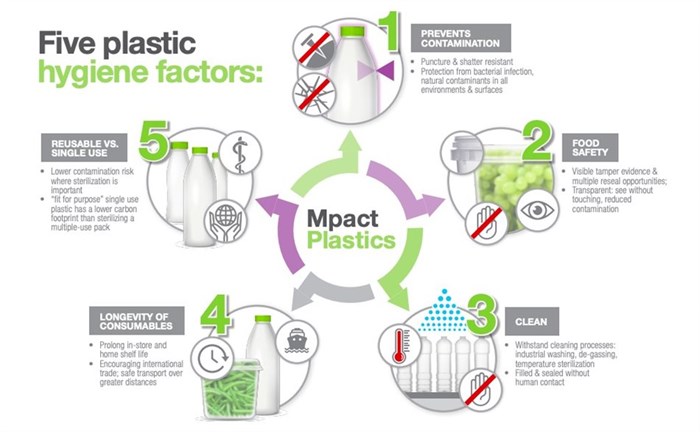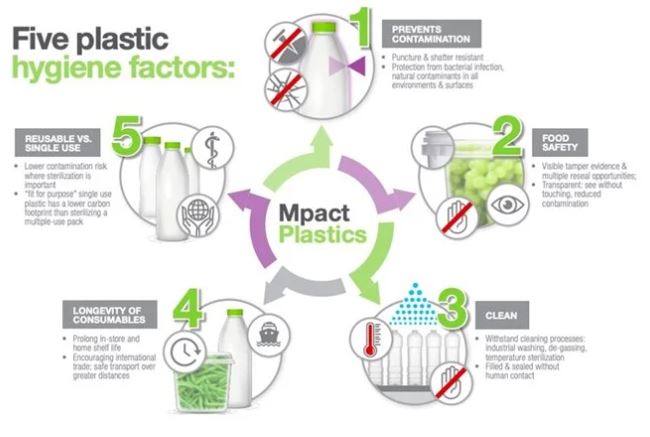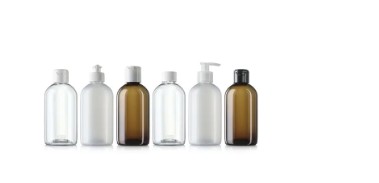With hygiene in the spotlight, why is plastic packaging the preferred medium within the retail and home environments?

Due to its shatter resistant properties, plastic has the ability to reduce breakages and thereby lower the risk of contamination within the retail and home environments, and surrounding work surfaces, whilst also protecting the contents from moisture, humidity, gasses and foreign bodies, including microorganisms.
From a food safety perspective, tamper evident designs that offer multiple reseal and child proofing opportunities keep the contents protected, hereby enhancing consumer confidence. Transparent packaging also allows consumers to look at, but not touch consumable products, reducing contamination and bruising.
Plastic is a clean packaging medium as it can be filled and sealed, within many factories, without human contact. Most plastic grades can also withstand multiple industrial washing, de-gassing and temperature sterilisation cleaning processes.
By extending the shelf life of most foods and produce throughout the distribution chain, plastic packaging lowers the carbon footprint, since food waste itself has a significantly higher carbon footprint impact, even compared to single use plastic items. Extended shelf life also encourages transport over longer distances and positively contributes by encouraging international trade.
Source:







